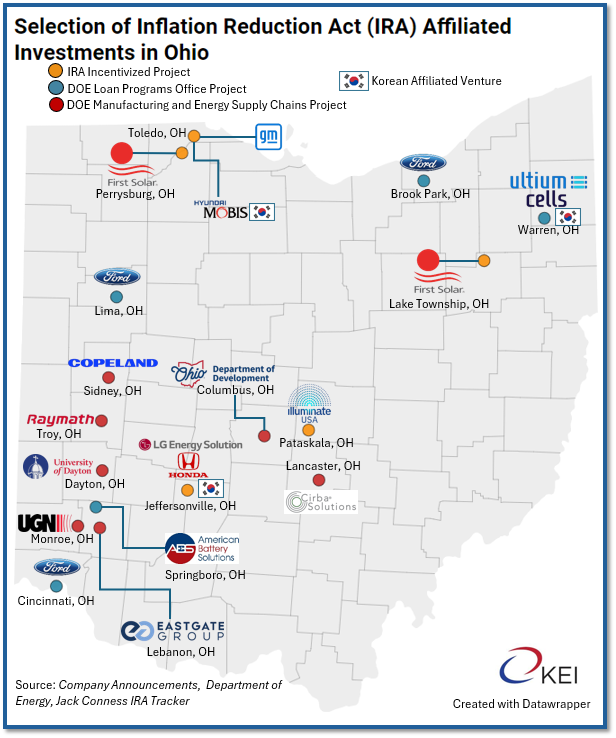The Peninsula
J. D. Vance’s Heartland Base Will Either Flame or Tame Trump 2.0 Policy

President Trump announced Ohio Senator J. D. Vance as his running mate last week ahead of the Republican National Convention. This gives a clearer direction to what his second administration’s economic policies may look like, while also imparting a greater weight to the effects it would have on Vance’s heartland base.
The first Trump administration was all in on trade protectionism. It took aim at the US role in international trade frameworks by withdrawing from the Trans-Pacific Partnership (TPP) and renegotiating the US-Korea FTA (KORUS FTA). Another target was America’s trade deficit, in which Trump doubled down into a trade war with China. Then, as the country was gripped by the COVID-19 pandemic, much of this protectionist agenda seemed to fall into the background, frozen in time by the 2020 election.
It is true that the Biden administration continued in the same framework of economic security by prolonging the Trump administration’s China tariffs, not letting up on Section 232 quotas for steel and aluminum imports, and focusing on resiliency while combating the threat of economic coercion in supply chains. But a second Trump administration could relaunch his previous economic agenda to a whole new level, transforming trade protectionism into economic nationalism and redefining the paradigm by which the United States does business with its international partners.
Trump would likely aim to upset what he views as the ill-perceived effects of globalization—or the “globalist” order itself. Such actions could include the dismantling of many of the previous administration’s economic policies—including the Inflation Reduction Act (IRA) and tailpipe emission standards that encourage electric vehicle production—moreover, scuttling the Indo-Pacific Economic Framework (IPEF) and using security commitments as a tool during trade negotiations. Although Trump claims ignorance of its contents, arguments put forward in the Project 2025 agenda could additionally serve to sunset valuable EV manufacturing support from the Department of Energy (DOE) Loan Programs Office—which was supersized by the IRA—or open up portions of the CHIPS Act for emendation.
Nevertheless, if Trump is elected, Vance’s role as vice president may serve to moderate the effects of Trump’s economic policies on the constituents that propelled his own political career. Ohio is part of a manufacturing heartland. Terminating some of the Biden administration’s economic policies could have innumerable consequences for a state that is home to more than a dozen investment projects made possible by the IRA, including several involving investment commitments from economic allies like Korea and Japan.

The Republican National Committee’s recently released platform agenda contains pronouncements like “Save the American Auto Industry,” “Revive our Industrial Base,” and “Become the Manufacturing Superpower.” While still committing to scrap Biden’s tailpipe emissions standards, this industrially focused agenda leaves broad room for IRA-style investments to be re-tooled if some of the most hardcore policy commitments are enacted in a second Trump administration, allowing a chance to keep valuable jobs and manufacturing commitments in place.
Vance’s place alongside Trump and his role as a heartland politician may help restrain some of the campaign’s wildest ambitions. For example, not all of Vance’s pronouncements are in complete lockstep with Trump’s agenda, and their divergence could suggest a tempering effect. Where Trump has put the US defense posture in the Indo-Pacific region up for negotiation, Vance has openly stated that the United States should focus more on East Asia and has called China the “biggest threat” to the United States. And rather than scrap the IRA altogether, Vance has pursued less extreme measures, such as introducing legislation to undo portions of the IRA allowing for tax credits on electric vehicles.
Moreover, projects associated with the IRA have been found to disproportionately benefit Republican-held districts. The core of Trump’s policy agenda will, in part, depend on congressional backing to properly execute. Therefore, the tempering effect Vance could have on Trump’s policies could be multiplied downward through the Republican congressional ranks where politicians are eager to maintain red-state job growth.
Nonetheless, Vance’s policies are still grounded in populist rhetoric. This puts them at the whims of the currents driving Trump’s base. His non-establishment background also means he may not have to answer to the same entrenched voices that drove politics in the past. What he may be sensitive to, however, are the constituents affected by the billions of dollars at stake in his home state from the very programs being targeted by Trump.
Tom Ramage is an Economic Policy Analyst at the Korea Economic Institute of America. The views expressed here are the author’s alone.
Photo by Gage Skidmore on Flickr.
KEI is registered under the FARA as an agent of the Korea Institute for International Economic Policy, a public corporation established by the government of the Republic of Korea. Additional information is available at the Department of Justice, Washington, D.C.
